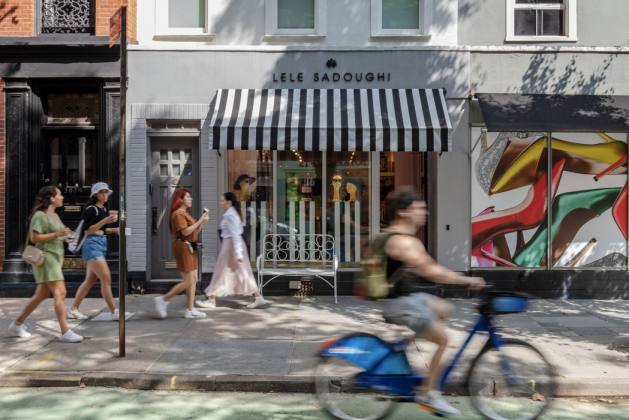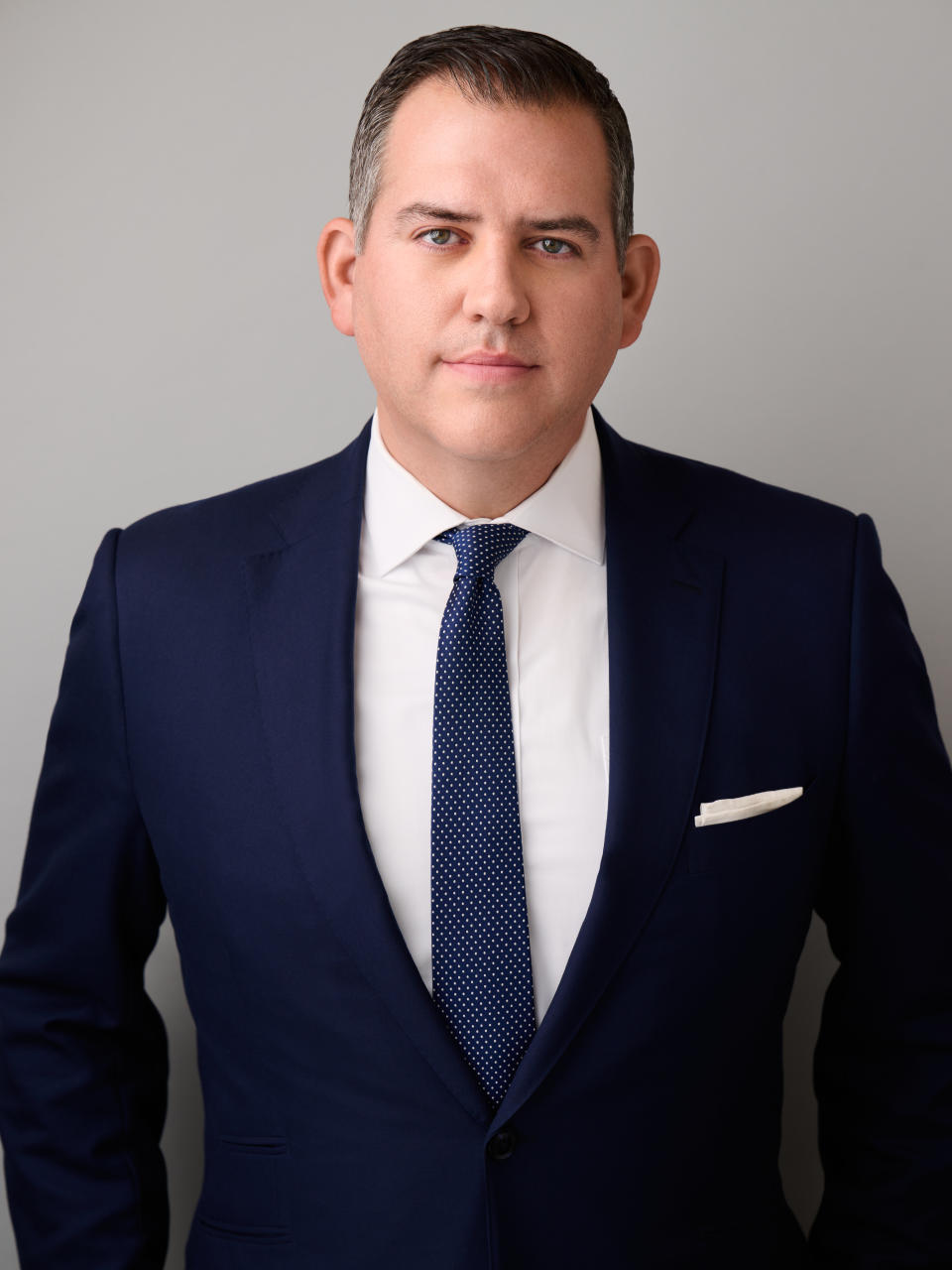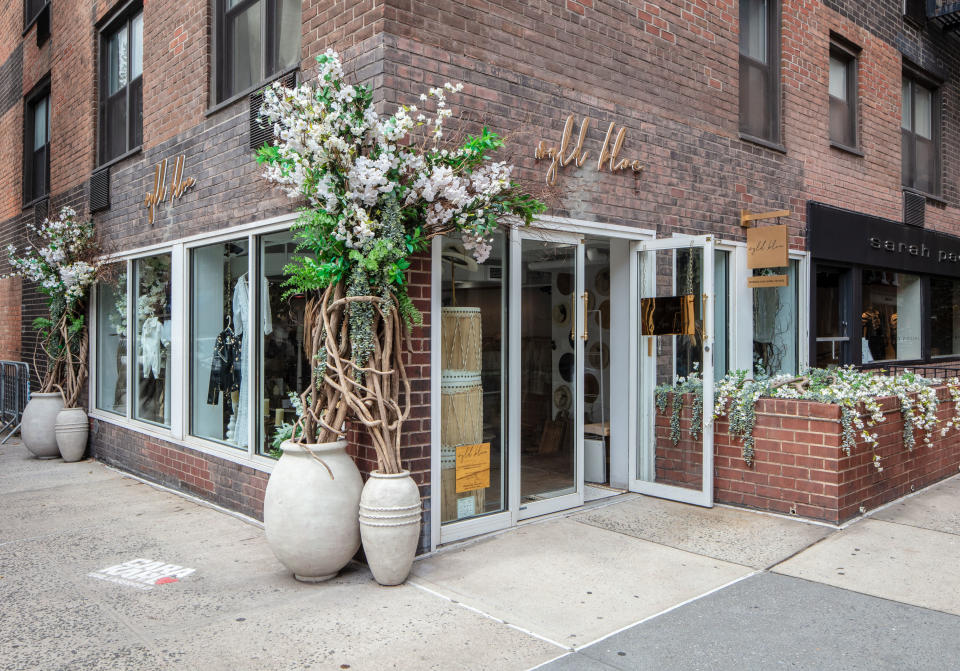Brookfield’s Seven Storefront Story on Bleecker Street
- Oops!Something went wrong.Please try again later.

Along Bleecker Street in Manhattan’s West Village, there’s been a succession of store openings filling vacancies thanks to an unlikely investor in the neighborhood: Brookfield Properties.
Among the world’s biggest developers and operators of real estate around the world, Brookfield’s diverse portfolio includes such mega mixed-used and mall projects as Brookfield Place and Manhattan West in New York City, Potsdamer Platz in Berlin, as well as the Ala Moana Center in Honolulu, and 730 Fifth Avenue, which houses Bulgari.
More from WWD
In 2018, however, Brookfield purchased a portfolio of seven small properties (from the now-defunct New York REIT Inc.) scattered on a few different blocks from 350 Bleecker to 387 Bleecker Street, for an estimated $31 million. It was pre-COVID-19, rents were at a peak, in the $600 to $700 per square foot range, and retailing became unsustainable for certain merchants despite Bleecker being a popular destination for shopping and dining by tourists and locals. At one time, Marc Jacobs, Ralph Lauren and Coach all had multiple stores on Bleecker. Brooks Brothers Black Fleece and MM6 by Maison Margiela also had stores. They all closed. As vacancies proliferated and luxury brands left, rents dropped to $300 to $400 though in the past couple of years, with the city recovering post-pandemic, rents are said to have perked up another $100 or so, on average.
“Whether it’s Brookfield Place, where we have 300,000 feet of retail at the base of 8 million square feet of office space, Fifth Avenue or Sixth Avenue by Bryant Park, it’s the same thing for the buildings we own — we do these streetscapes all the time. It’s actually at the core of what we do,” said Jason Maurer, executive vice president, national urban retail, U.S. office of Brookfield Properties. “But we’ve never done it in an environment where we don’t control the totality of the real estate. That was the trick here on Bleecker Street.”
After acquiring the real estate, Brookfield negotiated several short-term, six-month to two-year leases including one with Arc’teryx, the Canadian outdoor clothing and equipment brand. After leaving Bleecker, Arc’teryx signed a long-term lease downtown, at Brookfield Place. Margaux, a footwear brand, also had a short-term lease.
Brookfield’s marketing and communications teams created a “Love Bleecker” campaign of activations, talks, wellness days and a variety of free events, to get the community interacting with the retailers and supporting the businesses. “It was a really important part of making Bleecker feel like it was a vibrant and lively destination again,” said Maurer, during a recent interview outside at a café by Bleecker. Brookfield, as standard practice, also helped the retailers with “your basic amount of landlord work, some tiny demolition work or maybe there was an HVAC unit replaced,” Maurer said. “We’re not talking about anything extensive here.”
Business on Bleecker Street started to get stronger. Consequently, “as some of these spaces turned over, we were able to re-lease the storefronts to longer-term tenants,” Maurer said. “We didn’t start our long-term leasing strategy in earnest until the middle of COVID-19. I think the way we executed on Bleecker is a really strong example of how to be creative during challenging times.
“Fast forward to today, we are fully leased across all seven store fronts with long-term leases. They’re all five to 10 years.”
Those with long-term leases with Brookfield on Bleecker are:
Wyld Blue, a lifestyle brand selling clothing, accessories and home goods at 350 Bleecker.
Pinko, an Italian contemporary fashion brand with U.S. ownership, at 367-369 Bleecker.
Doen, at 384 Bleecker, a women-owned fashion collection inspired by nostalgia and the California coast.
Lele Sadoughi, at 387 Bleecker, for colorful, detailed accessories.
Tarin Thomas, a local jewelry designer located right off Bleecker at 92 Perry Street.
Sarah Pacini, a Montreal-based women’s clothing store, at 350 Bleecker.
Ganni, a Danish contemporary fashion brand, at 382 Bleecker.
“These are all new leases with tenants who don’t have mature businesses on the block yet because they’ve opened somewhat recently, but the performance that we’ve seen has exceeded any of ours and their expectations,” Maurer said, adding that he doesn’t see further opportunities for Brookfield on Bleecker, barring unexpected vacancies. In 2017, Bleecker, on the stretch running from Bank Street to Seventh Avenue where Brookfield has its properties, had a 18.7 percent vacancy. Currently, the vacancy rate there is 5.6 percent.

“When you bring in quality retailers, foot traffic returns, the neighborhood starts to feel more vibrant and, over time, the market finds itself to a certain extent,” Maurer said. “Bleecker Street has always been charming, but there was all of this vacancy, and we saw an opportunity to purchase at scale.
“While we are big believers in luxury, we felt like the block had perhaps moved away from that category,” Maurer observed. “We weren’t overly prescriptive in terms of the brands we sought, but we certainly had a strong point of view on who we wanted and wanted to make sure they would embraced by the community and would be well patronized.”
Bleecker Street is named after Anthony Lispenard Bleecker, a farmer who deeded his property to the city in the 19th century. The city auctioned off parcels of the land to different owners.
Bleecker is central to the West Village’s tangle of quaint side streets lined with townhouses for affluent residents, chic fashion and accessory boutiques, cafés, restaurants and some service-oriented businesses. For the most part, they’re small, independent businesses.
Heading east on Bleecker, the character changes crossing Sixth Avenue. There’s more of a mass appeal, and New York University and its students prevail. Rents are lower, and not cost prohibitive for food establishments to operate. But to the west, “Our spaces aren’t particularly well suited for food because it becomes a challenging economic deal for that use,” Maurer noted.

Asked if Brookfield’s approach on Bleecker Street could serve as a template for other neighborhoods, Maurer said, “The answer is yes. We’re pretty confident about that. It’s a matter of finding the right opportunity in the right market and the right real estate. If the opportunity were to present itself on something like Fillmore Street in San Francisco, sure.
“Our portfolio at this point is really concentrated in New York, Washington, D.C., Houston, Denver, Los Angeles, San Francisco, Silicon Valley,” Maurer said. “A lot of those cities offer an opportunity. But I don’t think it has to be a city where we have an established presence. That being said, do I find it realistic that we’re just going to go to a city where we have no other presence and just buy a small retail portfolio? It’s probably unlikely in that sense.”
Best of WWD

